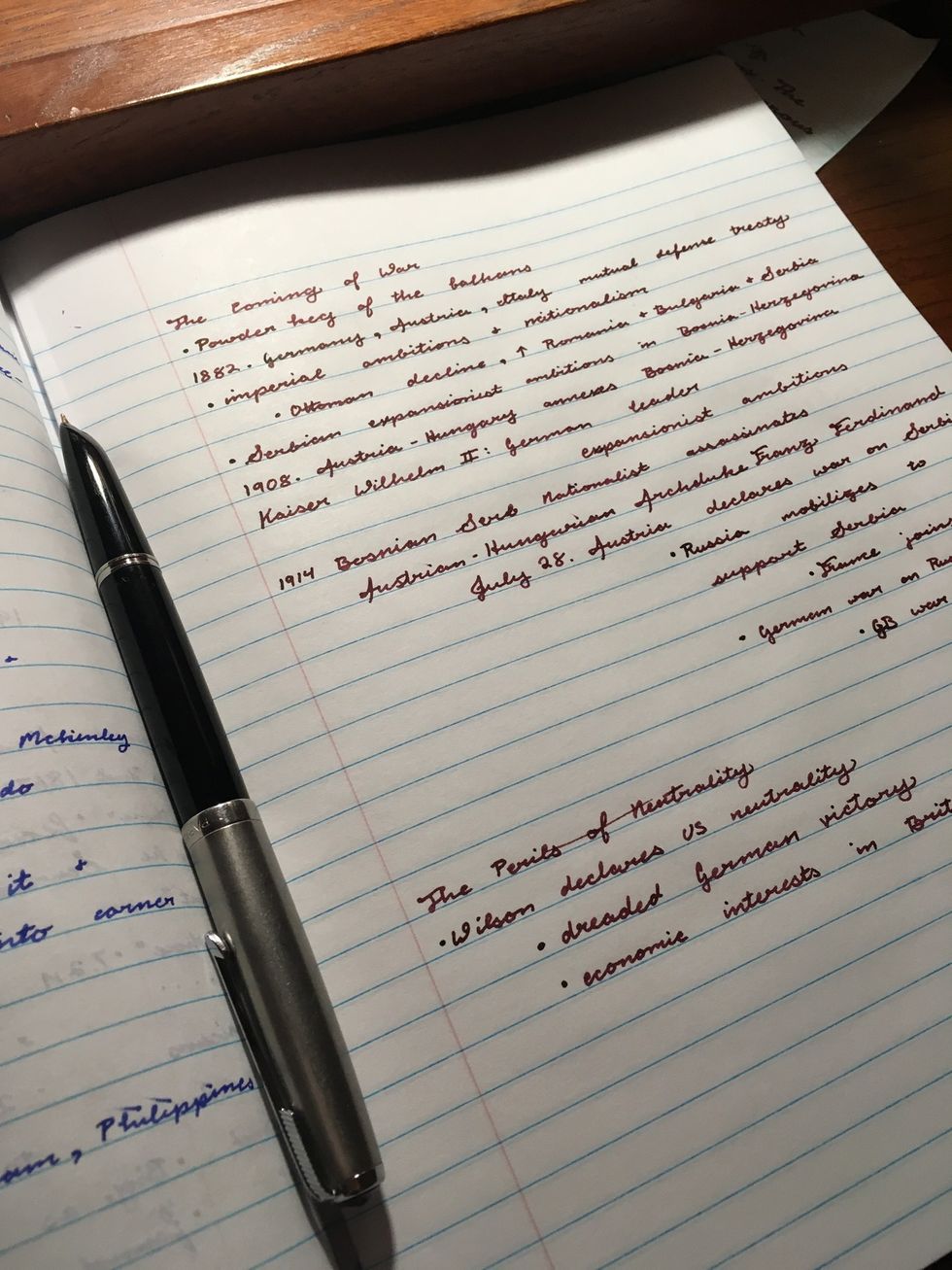Cursive is dying, dead. Gone are the days of the swirls of spencerian script or the soft points of the Palmer method. Gone are the days when second and third grade students piled into their elementary schools desks stuffed with pencils and lined paper to learn neat cursive penmanship. Gone are the days when children could easily read a letter written in cursive from an older relative. Cursive is dying, dead. My classmates take notes in scrawled print or in type on computers. A friend does not know how to sign his name. Another friend teaches him. I take my notes in a burgundy ink, in careful, cursive script. Cursive is dying, but cursive is not dead.
As long as there is breath in my body, cursive will live. I will write in cursive until the day I die.
There's a certain joy that comes from writing in cursive, a certain pride in spilling ink in pseudo-illegible patterns across crisp paper. The writing itself might resemble an absentminded doodle, the ramblings of an artist whom never quite learned to paint. The letters might make little sense compared to their sharp, static print counterparts. The script might be time consuming and somewhat unnecessarily to learn. It is more than that. Cursive was the writing method used on the great documents of history: the Magna Carta, the Constitution, the Declaration of Independence. Cursive was the writing method of our grandparents, our great grandparents. Cursive is nostalgia, history, beauty spread on paper in flowing strands of ink or graphite. Cursive writing is art to print's utilitarianism.
And really, print is on its way out too. We write less, preferring to type documents, notes, and correspondence. Handwriting is almost universally a last resort when compared to the ease of using a laptop or even a phone. Type marches across paper that once held the careful ambling of print and, not long before, the gentle, lilting dance of cursive.
But if we are writing less, why not make it beautiful? Surely with the time electronic type has saved us, we can devote the time we spend with pen and paper making it beautiful. Properly learned cursive is faster than print anyways. The letters don't break like they do in print. But that is besides the point. Cursive, even poor cursive, is writing, something merely practical, made beautiful. It is an aesthetic alcove carved from the bleak lines of plain paper. Why let that slip away?






















 sunrise
StableDiffusion
sunrise
StableDiffusion
 bonfire friends
StableDiffusion
bonfire friends
StableDiffusion
 sadness
StableDiffusion
sadness
StableDiffusion

 purple skies
StableDiffusion
purple skies
StableDiffusion









